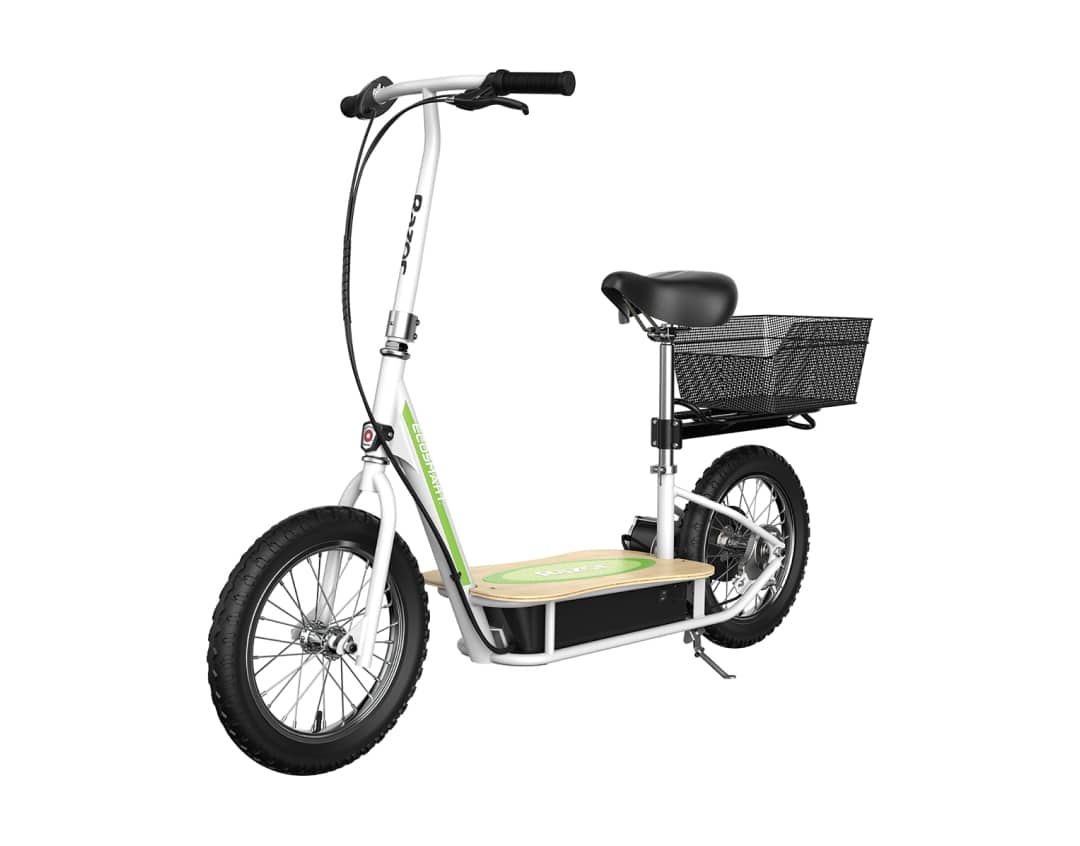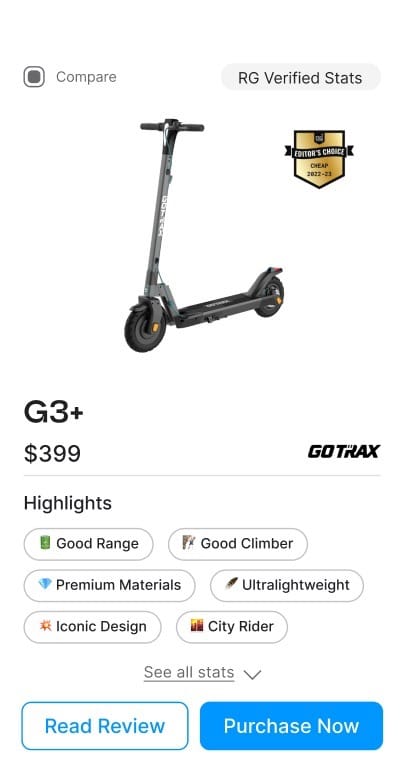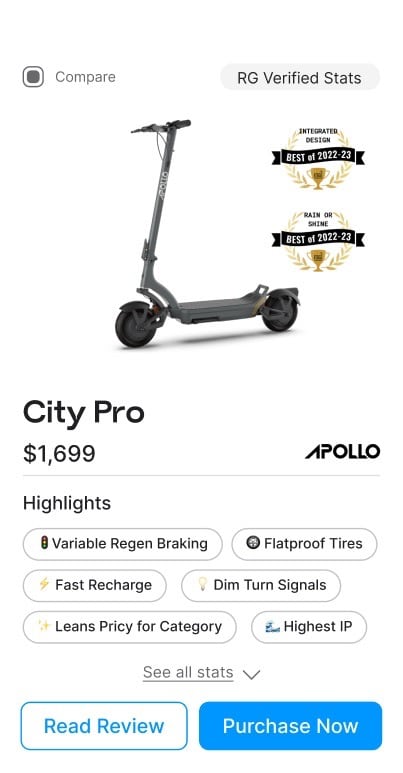
Ben Flynn
Meet Ben, your go-to scooter aficionado and in-house wordsmith at Rider Guide. With a genuine passion for two-wheelers (6 years of riding), he’s not just penning reviews but sharing firsthand experiences in an articulate narrative. You can catch him ripping through rocky trails on his Suzuki Vstrom 1000 or doing 45 miles an hour on his Dualtron Victor when he’s not busy at his writing desk, offering you the most unique and informed perspective on every scooter that rides the streets.
Discover the fascinating and jaw-dropping history of Razor Scooters, from their humble beginnings to becoming a global phenomenon.
Contrary to popular opinion, Razor did not invent the scooter. Shocking? Yes.
So, who invented the scooter? Well, it’s difficult to pinpoint a single creator of the first kick scooter. Like many inventions, the design was likely the result of multiple individuals refining and iterating on the same basic idea in various parts of the world. However, the essential design—a platform on two or four wheels, with a handlebar for steering—remained consistent.
To Razor’s credit, however, they revolutionized and popularized scooters for the world over. From the moment they hit the scene in the late 1990s, Razor Scooters became an instant sensation. Now, the timeline gets a little blurry–but most millennials will remember the year 2000 as the year everyone was either on a Razor scooter or dodging a Razor scooter on the streets.
This article delves into the evolution of Razor scooters, transitioning from a fleeting trend to a timeless classic.
Tracing Back to Razor Scooters' Origins
The first modern scooter, depending on the historical records you’re studying, is thought to be the invention of Switzerland’s Micro Mobility Systems. Micro Mobility Systems released their version of the modern scooter in 1996, which was by all means a pretty basic model. That said, this ‘new invention’ had enough flare to capture the attention of Carlton Calvin, a California-based entrepreneur, right around May of 1998.
By this time, the ‘modern’ scooter was quite popular in Asia for two key reasons:
- It was fun to ride over short distances
- It folded easily for storage
Carlton, in 1999, through the JD Corporation, began working on his design of the first Razor scooter. Though it didn’t take many sleepless hours and countless prototypes for Carlton to perfect his design. He wanted to create a scooter that delivered the same level of fun and convenience but also one that incorporated sleek and modern aesthetics. And finally, in 2000, the first Razor scooter was launched, revolutionizing the scooter industry worldwide.
Over 5 million units sold within the first 6 months of release
The Razor scooter was distributed via San Francisco’s, The Sharper Image. The ads were quite catchy at a time when television commercials were still a popular form of advertising.
Real fun. Wheelies. Color-coordinated grips. Non-skid surface. Wheel bar for tricks…
The Razor scooters’ sleek aluminum frame, smooth rolling wheels, and adjustable handlebars set them apart from anything else on the market. And seemingly overnight, what started as a simple folding aluminum scooter quickly transformed into a cultural phenomenon. Kids quickly fell in love with the sensation of gliding effortlessly through their neighborhoods, and a craze was born.
Challenges Razor Faced at the Onset
As Razor Scooters skyrocketed in popularity, they also faced their fair share of controversy. The two main challenges the creators of the Razor scooter met were:
- The impression that the scooters were a passing fad
- The widespread notion that scooters posed a safety threat
The problem with labeling a product as ‘trendy’ is that it often leads to skepticism about its longevity and sustainability. This made investors skeptical. However, Carlton and his team needed financing to ease navigating the complex world of manufacturing and distribution. They had to overcome the perception that these scooters were not toys but a legitimate mode of transportation, which they did, as evidenced by their historical success.
The other challenge had to do with the public’s safety concerns regarding the scooters. People felt like they were constantly dodging Razor scooters on the streets. To make matters worse, the targeted age group (pre-teens) was often seen as reckless and irresponsible, further fueling the skepticism. But by this time, in the Summer of 2000, the Razor scooter was already so popular that parents and the general public had no choice but to actively promote safe riding practices and encourage responsible scooter use among pre-teens as it was quite evident they were here to stay.
The Success of the First Razor Scooter
Before scooters, kids could either ride skateboards or bikes. But as Razor made more and more sales, scooting quickly became the sport of tiny children, with their massive success marking a significant moment in the history of recreational toys and personal transportation.
Rapid Rise to Popularity
The Razor scooter’s introduction and subsequent explosion in popularity can be likened to a cultural phenomenon. Within the first six months of its U.S. release in 2000, over 5 million units were sold, making it one of the hottest and fastest-selling items of the time. But what factors led to this seemingly instantaneous success?
Factors Behind the Initial Success of Razor Scooters
The success of Razor scooters has been studied extensively by entrepreneurs, and these are five elements that can be attributed to their immense success:
- Design & Portability: The sleek aluminum design was not only durable but also foldable. This made it easier to carry and store than bicycles, appealing to both kids and their guardians.
- Affordability: Razor scooters were accessible to a broad range of consumers due to their low price points. To date, the company makes some of the most affordable scooters for kids and adults.
- Marketing & Timing: The late 1990s and early 2000s saw an emphasis on urban and compact recreational toys. The Razor scooter fit perfectly into this trend.
- Universal Appeal: While targeted primarily at children and teenagers, its design also attracted college students and even adults, making it a versatile product for various age groups.
- A Cultural Staple: The Razor scooter’s popularity led to widespread media coverage, and it quickly became a symbol of youth culture in the early 2000s.
The Unbelievable Popularity of Razor Scooters
It’s hard to overstate just how popular Razor Scooters became in their heyday. They were a staple of every neighborhood, and every kid on the block seemed to have one. But what exactly made them so irresistible? We have a few thoughts:
Accessibility: Unlike bicycles or skateboards, scooters require minimal skills to enjoy. Kids of all ages and athletic abilities could hop on a Razor Scooter and experience the thrill of cruising down the street with ease.
The Razor Scooter won the Spring/Summer Toy of the Year Award in 2000
Sense of Adventure and Freedom: Razor scooters allowed kids to explore their surroundings, discover new shortcuts, and escape the confines of their immediate surroundings. Riding a Razor Scooter became an expression of independence and an avenue for personal exploration.
And the popularity of Razor Scooters wasn’t just limited to kids. Adults also embraced the trend, finding joy in reliving their childhood memories or simply enjoying a fun and convenient mode of transportation. Razor Scooters became a common sight on college campuses, where students used them to zip between classes or explore the campus grounds.
Rise of Professional Riders: As Razor scooters became commonplace on streets and playgrounds, some riders began mimicking skateboard tricks, adapting them to the scooter’s unique design. From simple jumps off curbs to more advanced spins and flips, it wasn’t long before scooters started to make appearances at skate parks alongside skateboards, BMX bikes, and rollerblades.
However, while sturdy for commuting, the original Razor design wasn’t durable enough for the stresses of advanced tricks and jumps. So, riders were forced to make modifications like reinforcing the scooters’ locks and redesigning handlebars with heavier-grade aluminum.
Diversity of Offerings: Further down the line, as the popularity of Razor Scooters grew, so did the variety of models available. The advent of platforms like YouTube in the mid-2000s was pivotal for the growth in popularity and subsequent modernization of scooters. Different versions with various colors, designs, and features hit the market. From electric scooters with powerful motors to off-road models with rugged tires, there was a Razor Scooter for every taste and preference.
Razor Scooters Focus Today
Today, Razor Scooters, designed and produced by Razor USA LLC, remain at the forefront of the personal transportation industry. With a legacy rooted in the early 2000s, the brand retains its strong American identity and stands as a symbol of innovation in the world of mobility. And though the enthusiasm around their products might not match the peak hysteria of their initial release, they’ve managed to retain a devoted fan base and consistently win over new riders.
How has Razor Managed to Remain Relevant?
One of the hallmarks of Razor’s enduring success is its keen sense of market dynamics and its willingness to evolve. They’ve consistently expanded their product range, ensuring they remain relevant in a fast-changing world.
In 2003, signaling their intent to keep pace with technological advancements, Razor introduced their first electric scooter. This Personal Electric Vehicle (PEV) could reach claimed top speeds of up to 15 mph, a significant leap from the traditional kick scooter. Equipped with a twist throttle and a chain-driven motor, this electric variant was more than just a toy—it was a statement, highlighting Razor’s commitment to combining fun with function.
Beyond their electric scooter models, Razor has delved into various other E-Ride Ons over the years, including self-balancing hoverboards, electric skateboards, ATVs, motorcycles, e-bikes, and even dirt bikes. Their product line reflects a conscious effort to cater to a diverse audience, from young kids looking for their first ride to adults seeking a reliable commuter tool.
In addition, recognizing the global shift towards sustainability, Razor has likewise emphasized eco-friendly products. Their electric scooters, for instance, offer a green alternative to short car trips, reducing carbon footprints. By promoting such products, Razor underscores its commitment to a sustainable future while ensuring its brand remains relevant to the environmentally conscious generation.
Our Top Recommendations for Razor Scooters
Here are our recommendations for a Razor Electric Scooter for Kids and one for adults.
The Razor PowerCore E90 Electric Scooter for Kids

The Razor PowerCore E90 is an electric scooter designed specifically for kids. Not only does this scooter promise hours of outdoor fun, but it also ensures safety and durability, making it a favorite among parents and children alike. With an impressive 4.5-star rating on both Amazon and Best Buy, it’s evident that the PowerCore E90 resonates well with its target audience. So, let’s quickly see what makes the PowerCore E90 electric scooter a standout choice.
Key Features of the Razor PowerCore E90:
- PowerCore Technology: Razor’s PowerCore technology promises more ride time, ensuring kids can play longer without frequent charging interruptions–up to 65 minutes/13 miles (claimed) per use, backed by a rechargeable 12V sealed lead-acid battery.
- Speed: The E90 can reach claimed speeds of up to 10 mph, providing a thrilling yet safe ride for young adventurers.
- Maintenance-Free: The scooter boasts a 98 W hub motor, which means no alignment is needed, and there’s no chain to tighten, offering hassle-free usage.
- Braking System: It features a front caliper hand brake, ensuring safe and effective stopping when needed.
- Durability: Built with a steel frame, the E90 promises longevity and can withstand the usual rough and tumble associated with kids’ play.
- Age Recommendation: The Razor PowerCore E90 is designed for kids aged 8 and above. However, parents need to gauge their child’s readiness for such a device. The manufacturer’s age recommendation is a general guideline, and children’s motor skills and judgment can vary. Supervision is paramount, especially during the initial rides, as with any ride-on toy.
Top Alternative for the Razor Power Core E90 Electric Scooter: The Segway Ninebot eKickscooter Zing E10

It is one of Segway’s most popular kids’ scooters with anti-skid tires, dual braking mechanism (electric plus mechanical), higher build quality, lighter weight, and requires less maintenance than the Powercore E90 Razor Scooter.
Razor EcoSmart R Seated Electric Scooter for Adults

The Razor EcoSmart R is a seated electric scooter designed with adults in mind. It combines comfort with functionality, offering a seated design ideal for longer commutes or leisurely rides. It’s an Amazon favorite with a 4.3-star rating, and here’s why teen and adult riders love it.
Key Features of the EcoSmart R Seated Electric Scooter:
- Eco-friendly Design: As the name suggests, the EcoSmart R emphasizes sustainability, typically using environmentally friendly materials, like the bamboo deck.
- Powerful Performance: It is designed for adult use and boasts a robust 500W chain-driven motor, ensuring adequate speed (a claimed 18 mph) and power for everyday commutes.
- Comfortable Ride: The scooter features a padded seat and spacious bamboo deck, allowing riders to travel in comfort.
- Long Battery Life: With a reliable battery system, it’s adequate for a manufacturer-cited 40 minutes of continuous run time.
- Safety Features: Equipped with a hand-operated rear disc brake and a sturdy frame, it ensures a safe ride for users.
- Convenience: The scooter has a carrier basket to store personal belongings or groceries, making it convenient for running errands or doing shopping.
Top Alternative for the Razor EcoSmart R Electric Scooter: Gotrax Flex

The Gotrax Flex is another seated electric scooter for adults with a carrier basket. However, you get better build quality, better (tested) performance, unmatched stability, a more compact build, a higher max rider weight capacity, and the Flex requires less maintenance due to its lithium-ion battery and the fact that it doesn’t come with a chain drive like the Eco Smart scooter by Razor.
In Summary: The Legacy of Razor Scooters
50 Million + Scooters Sold: 15 Million Electric Scooters Sold!
Razor Scooters have had an extraordinary history, and it is obvious that their influence goes well beyond the area of personal transportation.As they offered a fresh perspective on how to experience the world, their arrival marked a cultural shift.
And even today, years after the initial craze has faded, Razor Scooters continue to inspire a sense of nostalgia and adventure. They remind us of a simpler time when the sound of wheels hitting the pavement was enough to make our hearts race.
But the impact of Razor Scooters goes beyond nostalgia. They also played a significant role in promoting outdoor activities and physical fitness among children and adults alike. Riding a Razor Scooter provided a fun and engaging way to stay active and enjoy the outdoors, contributing to a healthier lifestyle.
Furthermore, Razor Scooters sparked a wave of innovation in the personal transportation industry. Their success paved the way for developing other compact and portable modes of transportation, such as electric skateboards and hoverboards. The concept of lightweight, foldable, and convenient transportation options owes a debt of gratitude to the pioneering spirit of Razor Scooters.
So, let us remember and celebrate the history of Razor Scooters – a story of innovation, controversy, and unwavering popularity. They may have started as a fad, but they grew into an icon that will forever occupy a special place in the annals of transportation history.







